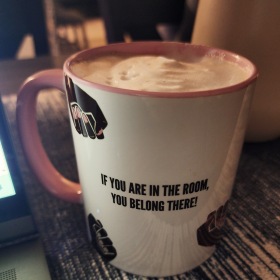
For much of my adult life I have been advocating for mental health awareness. For mental illness to receive equal importance and treatment just like physical illness. Even now, in the face of rising concerns regarding the mental state of our country due to the pandemic, people still aren’t convinced there is a problem. If they have some semblance of belief in the seriousness, they still aren’t comfortable confronting the issue head on.
But we have to. People’s lives depend on it.
Sometimes we have to give permission for people to be human and open up to us. We have certainly created an environment where people are free to share about physical health issues. Look at what is happening with COVID-19. Everyone is talking about that. People who have had it and who recovered are encouraged to talk about it. People who have lost loved ones are encouraged to talk about that too.
We encourage people to talk about life and death.
We silence or hush people when they talk about mental health.
Why? Because most people just don’t know how to have the conversation. They don’t want to ask the question and have to bear the responsibility of taking action based on the answer. Think about all the times you have asked someone how they are doing and they reply “fine.” Even though you may have a feeling that they are not fine, you are content to accept that answer because it removes any obligation to offer help.
But answer this: If you walked up on someone choking, would you stand idly by simply because you were uncomfortable or didn’t want to feel obligated to perform the Heimlich maneuver? Would you over think it, mulling over whether it’s your business? Chances are you would act with a quickness.
Acting in the best interest of someone’s mental wellbeing is no different. Living with mental illness, fearing stigma, and not having support can choke the life out of anyone. Often times, people are crying out for help. Often times, people fail to listen because they don’t know how.
Fortunately, there are some basic things you can do to prepare yourself to have a conversation about mental health.
- Educate yourself. When I first started advocating for mental health, there was no Google. Now education and information is available with a few clicks. The Campaign to Change Direction is a great resource for learning the 5 signs of emotional suffering as well as the healthy habits of emotional wellbeing. It’s simple, actionable and easy to remember.
- Don’t settle for “I’m fine.” Once you have learned how to recognize when a friend, loved one or coworker may be struggling, don’t settle for “I’m fine.” If your gut is telling you something is wrong, try to get more information. Sometimes, simply asking “are you really fine?” gives a person permission to be honest and open about what is really going on.
- Listen. Educating yourself about the basics doesn’t make you an expert. Mental illness and emotional suffering looks different for different people. Once you ask the question, be prepared for the answer, whatever it is. Actively listen to decide what, if anything, you need to do next.
- Take action. Sometimes, we ask the question and people open up, vent or share and feel somewhat better. Other times, people may share more challenging things. If you hear that someone may be a danger to themselves or others, there are resources you can connect them to or leverage yourself for further support. Here are a few:
- Suicide Prevention Lifeline – 1-800-273-TALK (8255)/ TTY: 1-800-799-4889
- Veterans Crisis Line – 1-800-273-8255, Press 1/ TTY: 1-800-799-4889
- Substance Abuse & Mental Health Services Administration (SAMHSA) National Helpline – 1-800-662-HELP (4357)/ TTY: 1-800-487-4889
Having a conversation about mental health is uncomfortable and hard. But guess what is harder? Living with mental illness and/or emotional suffering with little or no support. Be brave. Ask the question. Be prepared for the answer. Listen. Take action if needed. You could save a life.
**This information is intended for the sole purpose of educating regarding topics related to mental health and is not meant as a substitute for professional medical advice or treatment. Those who are at risk, should seek immediate assistance from emergency personnel.





